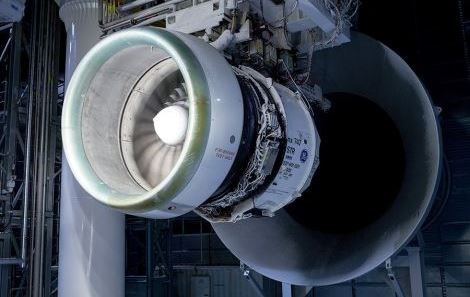GE Aviation Building Ceramic Coating Plant In North Carolina
CMCs are made of silicon carbide ceramic fibers and ceramic resin, manufactured through a highly sophisticated process and further enhanced with proprietary coatings.

GE Aviation has announced plans to build an advanced composite component factory near Asheville in Western North Carolina. The new 125,000-square-foot facility -- next to an existing GE Aviation machining plant -- would produce engine components made of advanced ceramic matrix composite (CMC) materials.
GE could begin hiring at the new CMC components plant as early as 2014. Within five years, the workforce at the plant would be expected to grow to more than 340 people.
The new facility would be part of a larger commitment by GE Aviation to invest $195 million across its North Carolina operations through 2017. GE Aviation has more than 1,300 employees in North Carolina at sites in Durham, West Jefferson, Wilmington, and Asheville.
Overall, the new CMC facility, combined with plant and equipment upgrades at existing sites across North Carolina, could create 240 additional GE jobs by 2017.
The introduction of CMC components into the hot section of GE jet engines represents a significant technology breakthrough for GE and the jet propulsion industry. CMCs are made of silicon carbide ceramic fibers and ceramic resin, manufactured through a highly sophisticated process and further enhanced with proprietary coatings.
GE Aviation views CMCs as a differentiator for its next-generation aircraft engines. The ultra-lightweight CMC material supports extremely high temperatures in the high-pressure turbine. CMC benefits include: reduced weight, enhanced performance and improved durability that provides longer time on wing, translating into lower fuel and maintenance costs for customers.
"GE has been investing in CMC technology for decades, and we are mastering the manufacturing of CMCs at our laboratory in Delaware. Asheville would be our first factory involved in the mass production of CMC components," said David Joyce, president and CEO of GE Aviation. "We believe the future Asheville plant will be on the ground floor of a new technology that will change aviation."
Related Content
-
3 Tests to Ensure Parts are Clean Prior to Plating
Making sure that all of the pre-processing fluids are removed prior to plating is not as simple as it seems. Rich Held of Haviland Products outlines three tests that can help verify that your parts are clean.
-
How to Choose Between Sulfate and Chloride-Based Trivalent Chromium
There are several factors to consider when choosing between sulfate and chloride-based baths for trivalent chromium plating. Mark Schario of Columbia Chemical discusses the differences and what platers should keep in mind when evaluating options.
-
Troubleshooting Alkaline Zinc
One of the most common problems that can arise when plating with alkaline zinc is an imbalance of brightener in the solution. In this helpful Ask the Expert article, Chad Murphy of Columbia Chemical discusses how different zinc metal concentrations and brightener concentrations can impact efficiency.













.jpg;maxWidth=300;quality=90)

